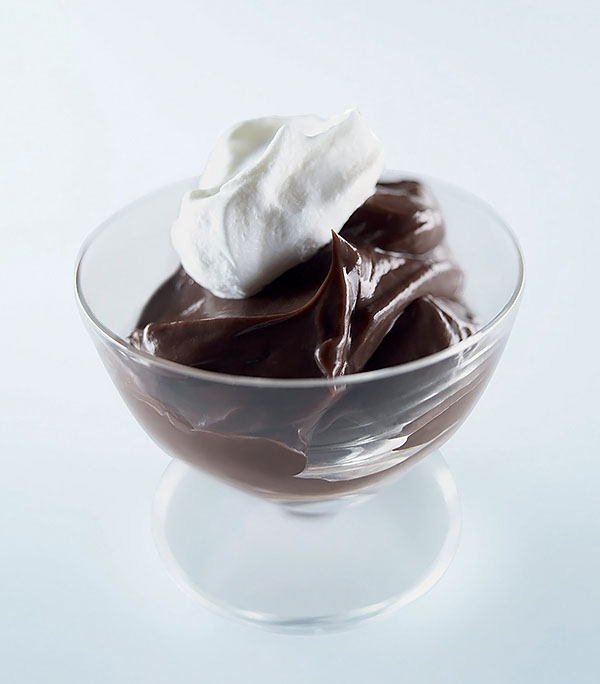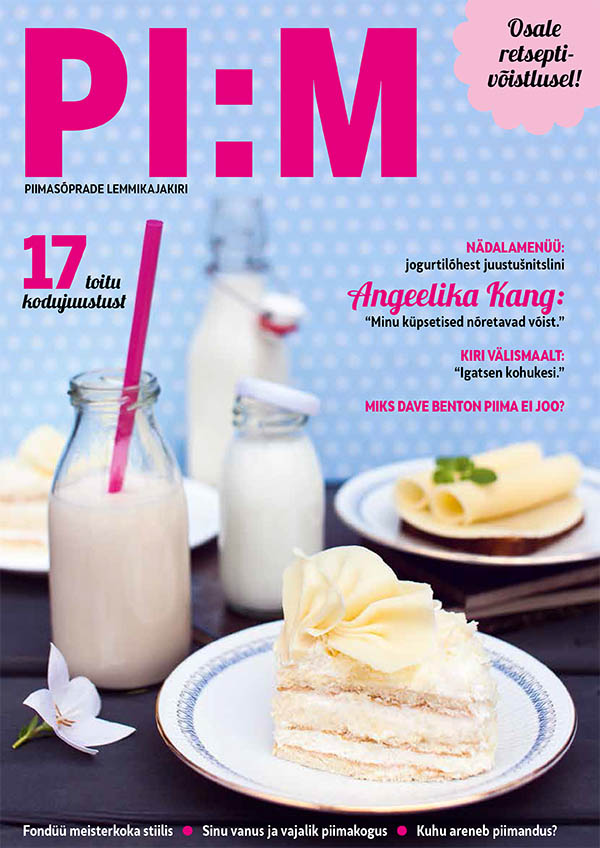milk | butter | kefir | cheese | yogurt | sour cream | buttermilk | sour milk | cottage cheese | curd | pudding
 Puddings – Popular Milk Desserts
Puddings – Popular Milk Desserts
Puddings are commercially produced milk-based desserts with various flavours that can be enjoyed alone or mixed with different ingredients. Since milk is an essential and primary component in the production of puddings, they contain all the macronutrients of milk (water, carbohydrates, fats and proteins).
Diverse Composition
Puddings have the creamy texture and soft silky flavour very important for this type of food thanks to their milk fats. Puddings made from Estonian milk contain only 2.2‑2.3 grams of fat. This is the right choice since puddings are not meant to be fatty energy bombs.
However, this amount of fats is still enough to be a significant source of essential fatty acids, and to effectively contribute to the absorption of fat-soluble micronutrients, such as fat-soluble vitamins. The cocoa powder that is added for flavour also contains fats and may increase the fat content of puddings a little.
Pudding contains a wide spectrum of carbohydrates. As to sugars, pudding contains milk sugar lactose. Indeed, the original milk used for producing puddings contains a relatively small amount of lactose and this compound is not very sweet either. When you look at the nutrition values on the pudding cup, you can see that the content of carbohydrates in this dessert is among the highest, compared with other nutrients, ranging from 15 to 17 grams.
However, this hides an interesting fact: namely, that in addition to sugars, puddings also contain other carbohydrates which stabilise this dessert but are not sugars. These compounds are modified starches, guar gum and carrageen. While digestive enzymes cleave modified starch, they do not have a decomposing effect on guar gum and carrageen. The micro-organisms in the gastrointestinal tract use part of the modified starch for producing organic acids essential to the human body.
Milk proteins make pudding a source of valuable proteins. Although their protein content is not very high, puddings still contain a significant quantity of proteins (2.5-2.8 grams), compared with several other desserts. Skimmed milk powder is sometimes added to puddings to increase their protein content.
Most of the proteins in puddings come from milk, so their amino-acidic composition is favourable both for those with a sweet tooth or not. Added cocoa also contributes a little to the increase of the protein content.
When we speak about milk-based products, we cannot forget calcium. Although many other dairy products are significantly better sources of calcium than puddings, the human body obtains this biological element crucial for the organism from these desserts as well.
Milk-based puddings are also essential sources of vitamins D and B₂.
Three Pillars of Flavour
Our dairy industry traditionally produces puddings with three types of flavours: vanilla, caramel and cocoa.
Synthetically produced vanillin, which shouldn’t be confused with natural vanilla, is added to vanilla-flavoured puddings. The main difference is that while the taste and aroma of the natural vanilla pods are generated by the interaction of at least 50 different compounds, only a single compound is responsible for the flavour of synthesized vanillin. Since vanillin has a very intense flavour and aroma, a relatively small amount of it is added to puddings.
Cocoa powder is added to cocoa-flavoured desserts. Although cocoa is added in a very small amount, only 1.9%, its impact on the appearance, flavour and nutritional values of the product is very noticeable. In addition, the carbohydrates, proteins and fats in cocoa powder contribute to the main nutritional content of the pudding. Cocoa has another benefit – namely, anti-oxidant polyphenolic compounds have been found in it.
The third main pudding flavour is caramel. This flavour is achieved by adding caramelised sugar and flavouring agents to the dessert.
In order to bring out different flavours better, a small amount of table salt is added to all these products. The low salt content is also confirmed by the fact that salt is always last in the ingredient list of puddings.
The proportion of the main nutrients in the dessert creates its calorific value. Puddings have no reason to be shy about this. A 100-gram portion contains 90-100 calories. Naturally, the actual amount of food energy depends on the size of the serving and the additional flavouring ingredients. Puddings with cocoa have the highest calorie content, although the difference is small compared with other puddings.
Texture of Puddings
In addition to its pleasant taste, characteristic aroma and colourful appearance, puddings should have a silky and smooth structure which is neither too liquid nor contains solid particles. The correct texture of puddings is achieved by adding modified starch, which has been derived from ordinary starch by processing it in a certain way, and the guar cum and carrageen that have a thickening effect.
Despite their foreign names and inclusion in the list of E-additives, both are carbohydrates of natural origin produced from plants. Guar gum is derived from guar seeds, and has two functions in the pudding: it serves both as a thickener and a stabiliser. Carrageen is produced from various species of red algae and it has three functions in the pudding: a thickener, a gelling agent and a stabiliser.
Storing Puddings
Puddings do not contain preservatives, so there are strict requirements for distribution and storing them at home. Puddings should be stored at a temperature of 2‑6 °C for their texture to be sufficiently thick for eating. If they are stored at room temperature, the desserts tend to liquefy quickly. Pudding is a mixture that has been stabilised in various ways, therefore it doesn’t readily tolerate freezing and the subsequent defrosting which spoils the dense and smooth texture for good.
The best before dates have to be very carefully observed with these desserts – puddings are highly perishable food products. A pudding cup that has already been opened is not meant for long-term storage. It should be eaten immediately after being opened since it tends to dry on the surface and may perish microbiologically in unfavourable storage conditions. As the product packages are rather small (puddings are sold in 125-gram and 250-gram cups in Estonia), every pudding lover can do it.
Puddings are praiseworthy products that can be enjoyed as a cold creamy complement to cakes or used for making various desserts in combination with jam, fruits, berries, chocolate chips and other additional ingredients.
Share ►


